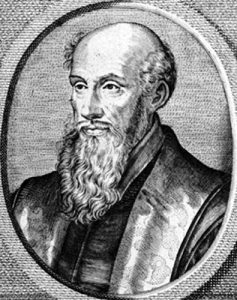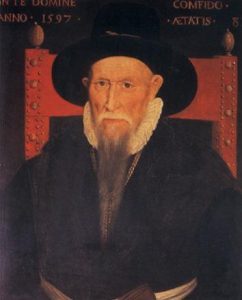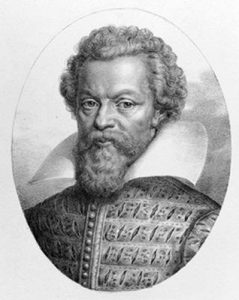From royal power to absolute power
According to tradition the Law was a principle directly come from God, the King being its guarantor and interpreter, and justice was rendered by the King in God’s name. For Francis I the Reformation obviously “tended towards upsetting the human and divine monarchy.”
In August 1563 during a parliamentary sitting in Normandy, Michel de hospital confirmed that the monarch was the only source of the law and that all his subjects, including the magistrates of sovereign courts, had to submit absolutely. But the power was not unrestricted, it was moderated by Christian faith, justice and fundamental laws of the Kingdom. Thus tyranny could be avoided. After the death of Henri II (1519-1559) the royal power was weakened ; Francis II (1554-1560) was a weakling teenager and he delegated power to his brother the Duke Henri of Guise, Cardinal Charles of Lorraine. Upon Henri II’s advent, numerous writings attacked the King’s bad counsellors, especially the Italian entourage of the regent-queen. Then some Calvinist agents questioned the idea of monarchy: one must distinguish the prince as a temporal and mortal person from monarchical dignity as such.
The role of representative institutions, such as the General Estates was emphasized by the use of sovereignty. The king was considered as a superior magistrate, but no longer as an essentially different person. The freedom of resistance was mentioned. The word « monarchomacs » referred to the supporters of this idea, more or less balanced.
For the Protestant jurist François Hotman, power belonged to the people, represented in the assembly or diet. The counsellors, noble men and magistrates were to be intermediaries between the people and the king. The authority of the laws limited the power of the king. The king’s power was mitigated by a council comprising princes of blood and by regularly consulting the Estates.
Théodore de Bèze defended the theory of a contract binding God to the king and the community. The true sovereignty was held by the people who handed it down to « minor magistrates », be they lords with hereditary fiefdoms, or to elected municipal officers, either mayors, or consuls or aldermen. Their role was to make sure the king governed within the framework of the fundamental laws of the kingdom.
The General Estates appointed the main officers of the crown and could dismiss them in case of treachery. “Magistrates were created for the people and not the people for the magistrates.” The resistance to the tyrant was also legitimised. In a book probably written by Philippe du Plessis, the royal stature was separated from the prince, and the sovereignty of the people was reiterated. The idea of the king as a sacred figure was rejected: “God’s power is infinite, that of the king is not.” Issued from the community the General Estates appointed magistrates, decided upon peace or war, made laws and raised taxes. These ideas were circulated by the Calvinists, and firmly rejected by the Catholic party in the first instance. But were later reiterated by the the leaguers to justify Henri III’s assassination; whereas the Protestants stood firmly on the opposite side to justify Henri IV’s coming to power. The latter changed the idea of royal power to absolute power – the term “absolute monarchy” was coined later.
In January 1586 Henri de Navarre addressing the clergy said “God commands over kings and kingdoms” ; thus establishing the basis of Gallican absolutism, hostile to any interference of the Holy See in France’s internal matters. Leniency, forgiveness, reconciliation manifested royal greatness. The authoritarian aspect of the regime, embodied in the king himself alone, could be seen in the fact that contrary to the Valois, Henri IV gathered the representatives of the kingdom only once, in Rouen in May 1597. The restoration of the State was his work, the role of officers and magistrates was reduced and they had to obey faultlessly. Only once did he visit parliament in Paris in May 1597 to check the edicts in favour of the entourage of his mistress Gabrielle d’Estrées.
The judicial making of the monarchical authority was established. The indivisible character of the royal sovereignty was sated. God’s lieutenant on earth, defender of the nation against foreign enemies, the monarch was extolled as the guarantor of political stability.




